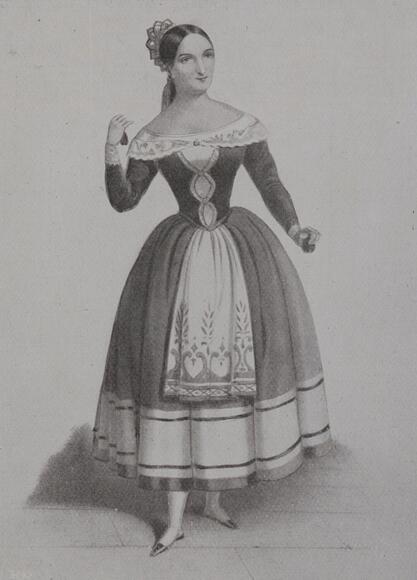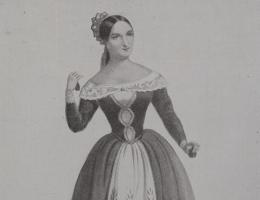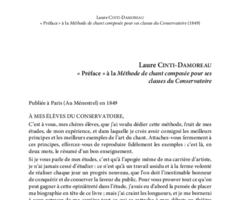Le Domino noir

Opéra-comique en trois actes.
A domino is a masked ball costume consisting of a cloak with a hood; by process of metonymy, this term also refers to an unknown female dance partner, usually identified by the colour of her clothes. Consequently, Angèle de Olivarès wears a black costume to the party organised in the apartments of the Queen of Spain to celebrate the birth of Jesus. This is her last night out before she takes the vows that will make her the abbess of the most stylish convent in Madrid. She finds a way of being recognised by her suitor of the previous year, Horace de Massarana, who follows her to a friend’s house and protects her anonymity for a while. The title role boasts an incredible variety of tone, owing to the different disguises adopted—the noble young lady notably passes herself off as a maid from Aragon—and to the discrepancy between her pious vocation and her romantic nature, combined with her flirtatious behaviour. For example, in Angèle’s grand aria at the beginning of the third act, when she finally returns to the convent in the early hours of the morning, she relates how she was attacked in the night by a thief who snatched her cross, then accosted by a student who was allegedly satisfied with a (euphemistic) kiss… although we hear her headlong flight, then the pounding of her panic-stricken heart in the orchestra, the scene is not devoid of a certain eroticism, heightened by this entreaty: “ô mon Dieu, disais-je en tremblant, sauve l’honneur du couvent !” (“Oh, Lord, I said trembling, save the honour of the convent!”) The lively vocalisation of the cavatina which follows evokes both the dance moves and the young woman’s laughter. Jacinthe, the authoritarian housekeeper, and Gil Pérès, the timid concierge, form a pair of comic servants whose reactions contrast with the serious nature of the risks run by Angèle and the intensity of Horace’s feelings. Auber excels particularly in writing some light, merry, extremely memorable motifs for the violins. The chatting of the women during the ball gives the composer an excuse to use the parlante technique, scattering lengthy sung conversations over a melodic orchestral continuum, not dissimilar to the technique employed in melodrama.


